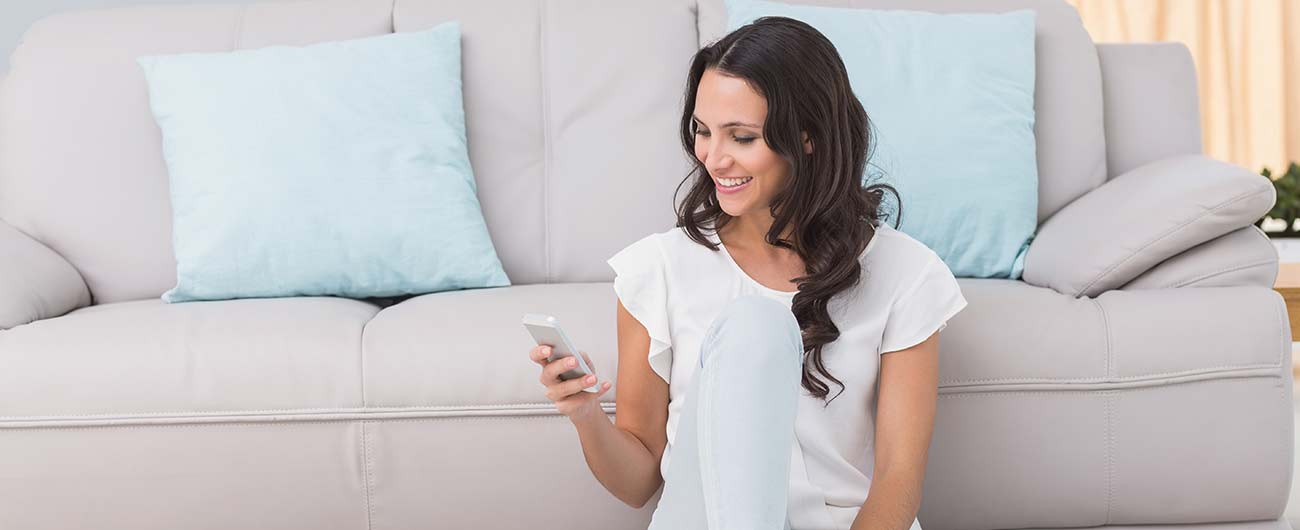Revitalize Your Home: Learn Curtain Cleaning the Right Way
Posted on 27/05/2025
Revitalize Your Home: Learn Curtain Cleaning the Right Way
Curtains do far more than simply block out light or provide privacy--they are essential elements that add character, color, and elegance to your living spaces. However, curtains can easily become overlooked in routine cleaning, accumulating dust, allergens, and odors over time. Revitalizing your home can be as simple as learning the right way to clean your curtains. This comprehensive guide will walk you through effective curtain cleaning methods, tips for maintaining different types of drapes, and expert advice to help you keep your home fresh, inviting, and healthy.
Why Curtain Cleaning is Essential for a Healthy Home
Many homeowners underestimate the importance of regular curtain cleaning. Dirty curtains not only spoil the appearance of your home, but they can also harbor dust mites, pet dander, pollen, bacteria, and even mold. These particles can degrade indoor air quality, worsen allergies, and create unpleasant odors. By keeping your curtains clean, you:
- Enhance air quality and reduce allergens in your living space
- Prolong the life of your curtains by removing dust and particulate build-up
- Improve the aesthetic appeal and overall freshness of your home
- Prevent mold and mildew growth in humid conditions
- Remove stubborn odors caused by smoke, pets, or cooking

The Right Way to Clean Different Curtain Fabrics
Not all curtains are built the same--fabric type dictates the best curtain cleaning method. Before you grab the nearest bottle of detergent or toss your drapes into the washing machine, identify the material and check the care label. Common curtain materials include:
- Cotton
- Linen
- Polyester
- Velvet
- Silk
- Sheer or Lace
Let's explore how to clean each of these safely and effectively.
Cotton Curtains
Cotton is resilient and often machine washable, making it one of the easiest materials to clean.
- Remove hooks and rings before cleaning.
- Check the label: If machine washing is allowed, use a gentle cycle with mild detergent and cold water.
- Avoid overloading the washing machine; wash curtains separately.
- Dry naturally to prevent shrinkage; avoid direct sunlight to minimize fading.
- Iron on a low setting if necessary.
Polyester Curtains
Polyester is durable, fade-resistant, and often machine washable.
- Follow the same steps as cotton curtains for machine washing.
- Air-dry or tumble dry on a low heat setting.
- Polyester rarely needs ironing, but if wrinkles occur, use a cool iron.
Linen Curtains
Linen adds elegance but is more delicate than cotton or polyester.
- Hand-wash or use a gentle machine cycle with cold water.
- Use mild, enzyme-free detergent to protect fibers.
- Avoid wringing or twisting; gently squeeze out excess water.
- Lay flat or hang to dry naturally.
- Iron while still damp for best results.
Velvet Curtains
Velvet is luxurious but requires careful handling.
- Most velvet curtains should be dry cleaned to maintain their plush texture.
- If the label allows, use a handheld steamer to refresh and remove dust.
- Avoid soaking or machine washing to prevent crushing fibers.
Silk Curtains
Silk is highly sensitive and requires professional care.
- Opt for professional dry cleaning for silk curtains.
- For light dust, use a gentle vacuum with a soft brush attachment.
- Avoid water and home-cleaning solutions that can damage silk fibers.
Sheer or Lace Curtains
Sheer fabrics and lace are delicate:
- Hand-wash gently in lukewarm water with a mild detergent.
- Rinse thoroughly and hang to dry.
- Avoid wringing to prevent stretching and distortion.
- Iron with a low heat setting, using a cloth to protect fabric.
Step-by-Step Guide to Curtain Cleaning at Home
Here is your step-by-step curtain cleaning guide that will help you revitalize your interiors effectively:
- Check the Care Label: Always review the curtain's label for washing instructions. If it is missing, research according to fabric or consult a professional.
- Remove Dust and Debris: Regularly use a handheld vacuum or soft brush attachment to eliminate surface dust. This simple habit prolongs curtain life and reduces the frequency of intensive cleans.
- Pre-treat Stains: Gently blot stains with a mild detergent diluted in water--avoid rubbing, which can spread or set stains. For heavy stains, consider spot-cleaning or professional curtain cleaning services.
- Washing Curtains: Follow the fabric-appropriate method detailed above. When machine washing, avoid combining with heavy items, as this may damage your drapes.
- Drying Curtains: Air-dry whenever possible, as high heat can shrink, distort, or fade curtains. Re-hang curtains while slightly damp to avoid deep creases and speed up the drying process.
- Ironing and Steaming: Most curtains benefit from a quick iron or steam to look crisp. Use the right temperature and iron on the reverse side for delicate fabrics.
- Re-hang and Style: Once dry, fix your curtains back on the rod. Use curtain weights for straight panels and adjust pleats and folds for a polished look.
How Often Should You Clean Your Curtains?
Frequency depends on your environment, but professional recommendations suggest:
- Deep clean curtain fabrics every 6 to 12 months
- Vacuum or dust weekly for high-traffic rooms or homes with allergies
- More frequent spot cleaning for kitchens, bathrooms, or pet-friendly homes
If you live in areas with high pollution or pollen, or have young children or pets, consider cleaning your curtains more frequently. Routine curtain cleaning will keep your fabrics looking fresher longer and help you avoid deep stains or permanent marks.
Signs It's Time to Clean Your Curtains
Not sure if your curtains need cleaning? Look out for these indicators:
- Visible dust or discoloration on fabric
- Faded colors or dull appearance
- Allergy symptoms worsening indoors
- Persistent odors near windows or curtains
- Notable stains, spots, or sticky residues
Identifying these signs early can help you revitalize your home and maintain a cleaner, healthier environment.
Pro Tips to Maintain Fresh Curtains Between Cleanings
Extend the cleanliness of your drapes with these simple maintenance tips:
- Dust your curtains weekly using a vacuum cleaner with a brush attachment.
- Open windows to allow air circulation and minimize moisture build-up.
- Avoid smoking near window areas to prevent yellowing and lingering smells.
- Use curtain liners to protect from direct sunlight and pollution.
- Shake out loose dust outdoors before performing any deep cleaning.
Home Curtain Cleaning vs. Professional Services
When should you choose professional curtain cleaning services over do-it-yourself efforts? While many synthetic and cotton curtains can be cleaned at home, some situations benefit from expert attention:
- Thick, lined, or layered drapes that are too heavy for domestic machines
- Delicate fabrics (silk, velvet, antique lace) that risk damage from washing
- Persistent stains or odors that do not respond to basic treatments
- Mold, mildew, or water damage cases
Professional cleaners use specialized techniques like steam cleaning, ultrasonic washing, or dry cleaning, preserving your fabric's integrity while delivering deeper results.
The Benefits of Routine Curtain Cleaning
Making curtain cleaning a part of your regular home maintenance offers long-term rewards:
- Enhanced air quality and allergy relief for your family
- Prolonged life and improved appearance of your drapery
- Brighter, more inviting living spaces
- Fewer pest infestations, such as dust mites or moth larvae
- Reduced household odors for a truly revitalized home ambiance
Eco-Friendly Curtain Cleaning Tips
If you want to keep your curtain cleaning process green and safe for your family, consider these environmentally conscious strategies:
- Choose phosphate-free, biodegradable detergents
- Spot clean using vinegar and water solutions for mild stains
- Line dry instead of tumble drying to save energy
- Consider steam cleaning, which uses only water and heat
- Dispose of dirty water responsibly, avoiding storm drains

Frequently Asked Questions on Curtain Cleaning
Can all types of curtains be machine washed?
No. While cotton and polyester curtains often fare well in the washing machine, delicate fabrics like silk, velvet, or antique lace may require hand washing or professional dry cleaning. Always check the fabric care label first!
How often should I deep clean my curtains?
Aim for a deep clean every 6 to 12 months, with routine vacuuming or dusting in between. High-traffic or allergen-prone homes may need more frequent cleaning.
What's the best way to remove stubborn stains?
Treat stains as soon as possible with a diluted mild detergent or a specialized spot cleaner. For set-in or tricky stains, consult with a professional curtain cleaning service.
Can curtains go in the dryer?
Some synthetic curtains tolerate a gentle tumble dry on low heat, but air drying is safest for most curtain fabrics to prevent shrinkage or damage.
Conclusion: Refresh and Rejuvenate Your Interiors
Learning the right way to clean curtains is a simple yet powerful way to enhance your home's ambience, safeguard your family's health, and extend the life of your drapery. With the curtain cleaning tips and step-by-step methods above, you can confidently tackle any window treatment while maintaining a beautiful, welcoming environment year-round. Don't forget that cleaner curtains mean cleaner air and a more revitalized living space--so give your home the fresh start it deserves!
Ready to transform your interiors? Start revitalizing your home with the proper curtain cleaning routine today!



